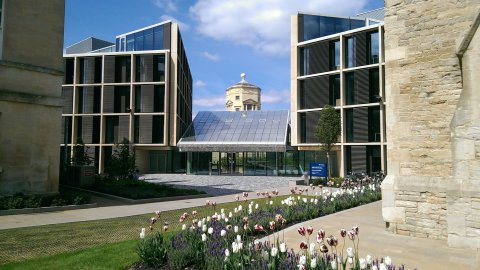11:00
Linear and Cyclic Antimetrics
Abstract
The core idea behind metric spaces is the triangular inequality. Metrics have been generalized in many ways, but the most tempting way to alter them would be to "flip" the triangular inequality, obtaining an "anti-metric". This, however, only allows for trivial spaces where the distance between any two points is 0. However, if we intertwine the concept of antimetrics with the structures of partial linear--and cyclic--orders, we can define a structure where the anti-triangular inequality holds conditionally. We define this structure, give examples, and show an interesting result involving metrics and antimetrics.



